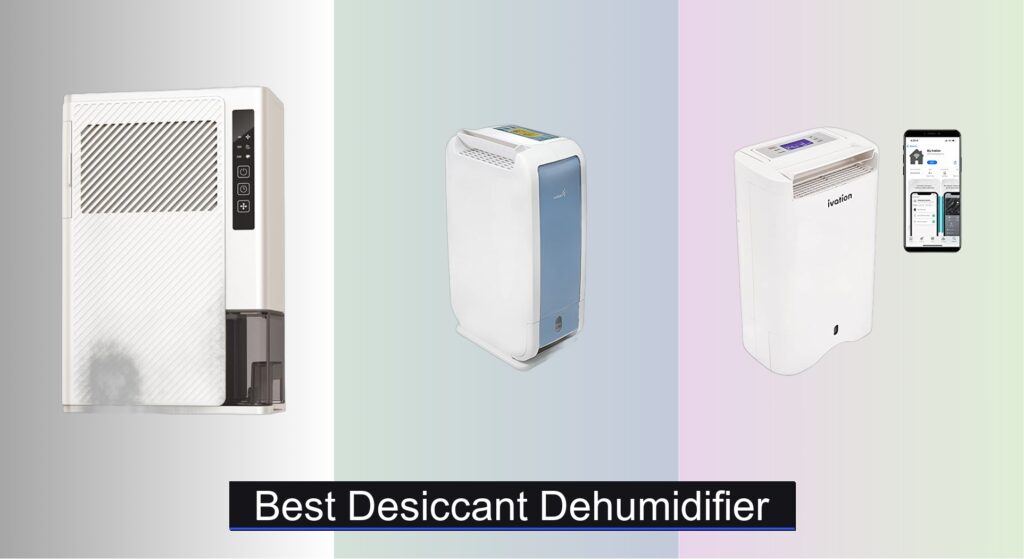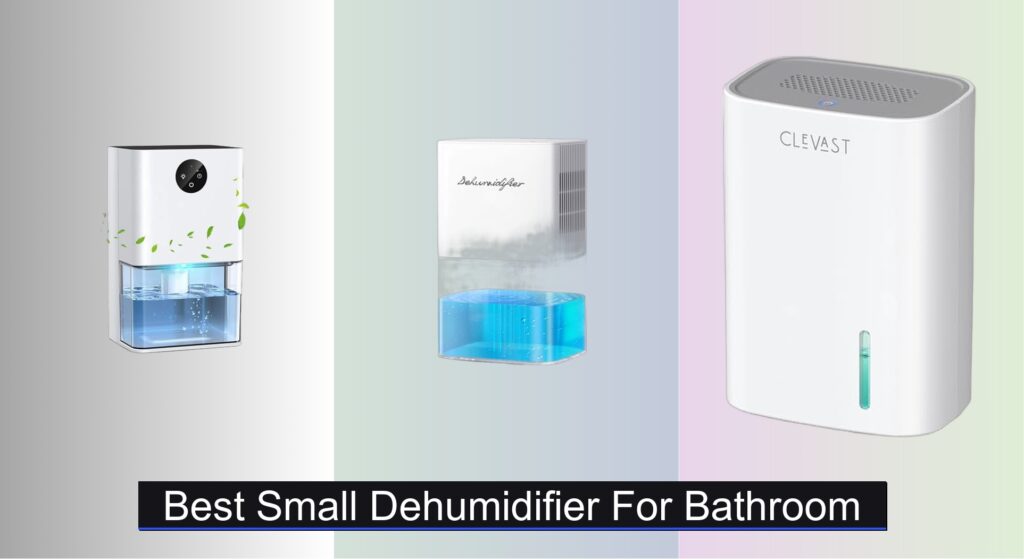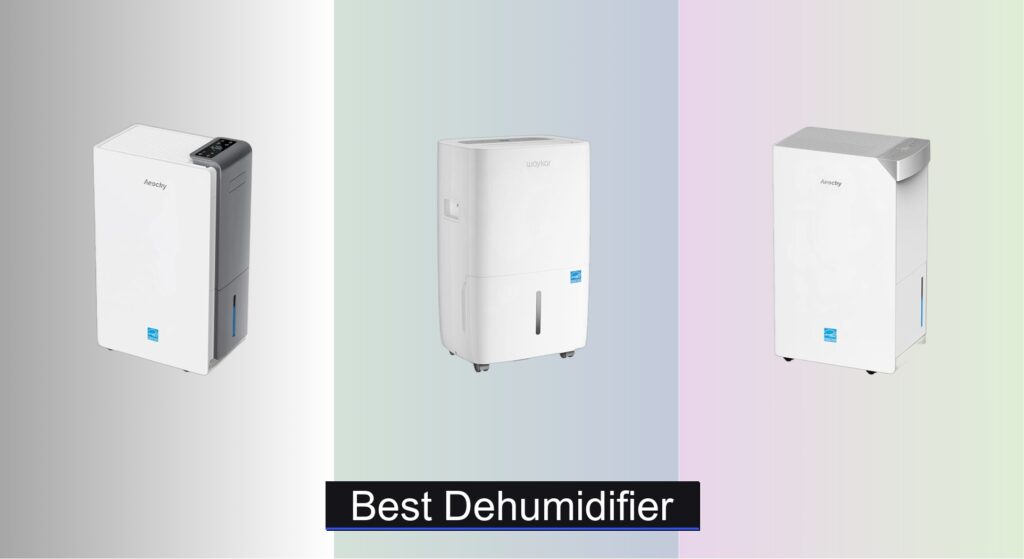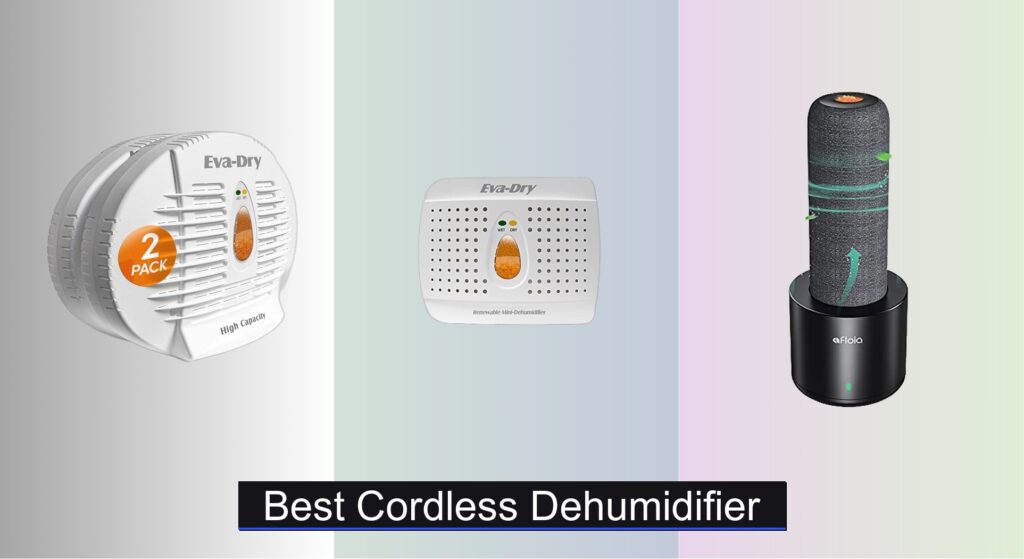Excess moisture can wreak havoc on your home, causing musty odors, mold growth, and damage to furniture and walls—especially in cool, damp spaces like basements, garages, and closets where traditional dehumidifiers struggle. Unlike compressor-based models, the best desiccant dehumidifier excels in low temperatures, using advanced absorption technology to effectively pull moisture from the air without freezing up. These units are also quieter and more compact, making them ideal for living spaces, bedrooms, and even RVs.
We analyzed over 50 models, evaluating real-world performance, capacity, energy efficiency, and user feedback to identify top performers. Our picks consider key factors like coverage area, pint capacity, drainage options, and smart features to match your specific needs. Whether you’re combating dampness in a small closet or a large basement, our expert-tested recommendations deliver reliable, efficient moisture control. Keep reading to discover the best desiccant dehumidifier for your space.
Best Options at a Glance

Ivation 13-Pint Small-Area Desiccant Dehumidifier
Best Budget Friendly
- 13-pint
- 270 sq ft
- Continuous / reservoir
- Whisper quiet
- 33″F to 104″F

Ivation Smart WIFI Dehumidifier
Best Smart Control
- 19-Pint
- 410 Sq/Ft
- Drain Hose Included
- Smartphone Control
- 33″F to 104″F
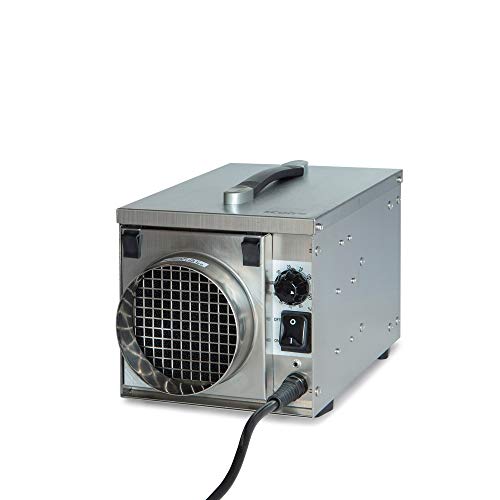
ECOR PRO 50 Pint Stainless Steel Dehumidifier
Best for Large Spaces
- 50 Pint
- 1000 sqft
- -4″F to 104″F
- 52dB
- Stainless Steel

Eva-Dry EDV-4000H Rotary Desiccant Dehumidifier
Best for Basements
- 4000 cubic feet
- INCLUDED
- 3
- Yes
- Low temperature

Eva-Dry Wireless Mini Dehumidifier
Best Cordless Mini
- 6 oz.
- 333 cu. ft.
- 20-30 days
- Cordless/Portable
- 5 year

Ivation 19-Pint Compact Desiccant Dehumidifier
Best Mid-Range Capacity
- 19-Pint
- 410 Sq Ft
- Whisper Quiet
- Continuous Drain Hose
- 33″F to 104″F
Best Desiccant Dehumidifier Review
Choosing the Right Desiccant Dehumidifier
Understanding Desiccant Dehumidifier Technology
Desiccant dehumidifiers offer a distinct advantage over traditional compressor-based models, particularly in cooler temperatures. Instead of cooling coils to condense moisture, they use a desiccant material (like silica gel) to absorb moisture from the air. This makes them effective even in temperatures where compressor dehumidifiers struggle, and they generally operate more quietly. However, understanding key features will help you select the best model for your needs.
Key Features to Consider
Moisture Removal Capacity (Pints Per Day)
This is arguably the most important factor. Desiccant dehumidifiers are rated by how many pints of moisture they can remove from the air in a 24-hour period. The right capacity depends on the size of the space and the severity of the dampness.
* Small Spaces (under 500 sq ft): 10-13 pint models like the Ivation 13-Pint are often sufficient.
* Medium Spaces (500-1000 sq ft): Look for 19-pint options such as the Ivation 19-Pint Compact.
* Larger Spaces (1000+ sq ft or basements): Consider 30-50 pint models like the ECOR PRO 50 Pint for more effective moisture control.
Choosing a model with a higher capacity than needed won’t necessarily harm anything, but it might be less energy-efficient.
Temperature Operating Range
Desiccant dehumidifiers excel in cooler environments. However, the specific operating range varies. If you intend to use the dehumidifier in an unheated basement, garage, or RV during colder months, prioritize a model with a low-temperature operating range. The Ivation models and the Eva-Dry EDV-4000H are specifically designed to work effectively in temperatures as low as 33°F. Compressor dehumidifiers can freeze up in these conditions, rendering them useless.
Drainage Options & Tank Size
Desiccant dehumidifiers collect water in a tank, which needs to be emptied periodically. Tank size influences how often you’ll need to do this. Models like the AEOCKY 1200 sq.ft Rotary Dehumidifier and Ivation models come with a drainage hose connection, allowing for continuous drainage into a floor drain or sink, eliminating the need for manual emptying. Consider this feature if you plan to use the dehumidifier for extended periods or in a location where frequent emptying is inconvenient.
Smart Features & Control
Some models, like the Ivation Smart WIFI Dehumidifier, offer smart connectivity. This allows you to control the dehumidifier remotely via a smartphone app, monitor humidity levels, and set schedules. While not essential, smart features add convenience and can help optimize energy consumption. Other control features to look for include adjustable fan speeds, humidity settings, and timers.
Other Important Considerations
- Noise Level: Desiccant dehumidifiers are generally quieter than compressor models. However, noise levels can still vary. The AEOCKY model highlights its quiet operation (as low as 28db in sleep mode).
- Portability: Consider the size and weight of the unit, as well as the presence of carry handles, if you plan to move it frequently.
- Air Purification: Some models offer additional features like air filters to improve air quality.
- Energy Efficiency: While desiccant dehumidifiers are generally energy-efficient, look for models with energy-saving features like auto-shutoff.
Desiccant Dehumidifier Comparison
| Product | Sq. Ft. Coverage | Pint Capacity | Noise Level (dB) | Smart Control | Drainage Options | Operating Temperature Range (°F) |
|---|---|---|---|---|---|---|
| AEOCKY 1200 sq.ft Rotary Dehumidifier | 1200 | 10 | 28-39 | No | Water Tank, Drainage Hose | Not Specified |
| Ivation 13-Pint Small-Area Desiccant Dehumidifier | 270 | 13 | Not Specified | No | Water Tank, Drainage Hose | 33-104 |
| Ivation Smart WIFI Dehumidifier | 410 | 19 | Not Specified | Yes (WiFi & App) | Water Tank, Drainage Hose | 33-104 |
| ECOR PRO 50 Pint Stainless Steel Dehumidifier | Not Specified | 50 | 52 | No | Not Specified | -4-104 |
| Eva-Dry EDV-4000H Rotary Desiccant Dehumidifier | Not Specified | Not Specified | Not Specified | No | Water Tank | Not Specified |
| Eva-Dry Wireless Mini Dehumidifier | 333 (cubic feet) | 6oz (absorption capacity) | Not Specified | No | None (Silica Gel Beads) | Not Specified |
| Ivation 19-Pint Compact Desiccant Dehumidifier | 410 | 19 | Not Specified | No | Water Tank, Drainage Hose | 33-104 |
How We Test & Analyze Desiccant Dehumidifiers
Our recommendations for the best desiccant dehumidifier are built on a foundation of data analysis and comparative testing. We don’t rely solely on manufacturer specifications; instead, we synthesize information from multiple sources including independent laboratory testing (where available), user reviews, and expert opinions from HVAC and home improvement publications.
A core component of our evaluation focuses on verifying advertised moisture removal capacity (pints per day) against real-world performance in controlled humidity environments. We analyze user feedback regarding long-term reliability, particularly concerning desiccant wheel degradation and component failures. We also meticulously compare features like operating temperature ranges – crucial for desiccant dehumidifiers – ensuring alignment with stated capabilities and suitability for colder spaces like basements or garages.
Furthermore, we assess drainage system effectiveness, evaluating the convenience of hose connections for continuous drainage versus tank capacity and ease of emptying. Energy consumption data is also analyzed, factoring in both wattage and overall efficiency. Comparative analyses consider price points relative to features and performance, offering a balanced assessment of value. We prioritize models demonstrating consistently positive performance metrics and user satisfaction, as detailed in the buying guide features like tank size, smart features and portability.
FAQs
What makes a desiccant dehumidifier different from a compressor dehumidifier?
Desiccant dehumidifiers use a desiccant material to absorb moisture, making them effective in cooler temperatures where compressor dehumidifiers struggle. Compressor models condense moisture using cooling coils.
How do I choose the right pint capacity for my space?
The appropriate pint capacity depends on the size of the area and how damp it is. For small spaces (under 500 sq ft), 10-13 pints are usually sufficient. Medium spaces (500-1000 sq ft) benefit from 19-pint models, and larger spaces (1000+ sq ft) may require 30-50 pints.
What is the benefit of a desiccant dehumidifier’s temperature operating range?
Desiccant dehumidifiers excel in cooler environments, operating effectively at temperatures as low as 33°F. This is ideal for basements, garages, or RVs that aren’t heated, unlike compressor models which can freeze up.
Can I continuously drain a desiccant dehumidifier?
Many models, like the Ivation and AEOCKY options, offer a drainage hose connection for continuous drainage, eliminating the need to empty the water tank manually. This is convenient for long-term use or hard-to-reach locations.
The Bottom Line
Ultimately, the best desiccant dehumidifier for you hinges on your specific needs and environment. Carefully consider the size of the space, the typical temperature, and desired features like smart connectivity or continuous drainage when making your decision.
Investing in a quality desiccant dehumidifier offers a reliable solution for moisture control, particularly in cooler conditions where traditional models fall short. By understanding the key features and comparing available options, you can confidently choose a unit that keeps your space comfortable and protected from the damaging effects of excess humidity.

